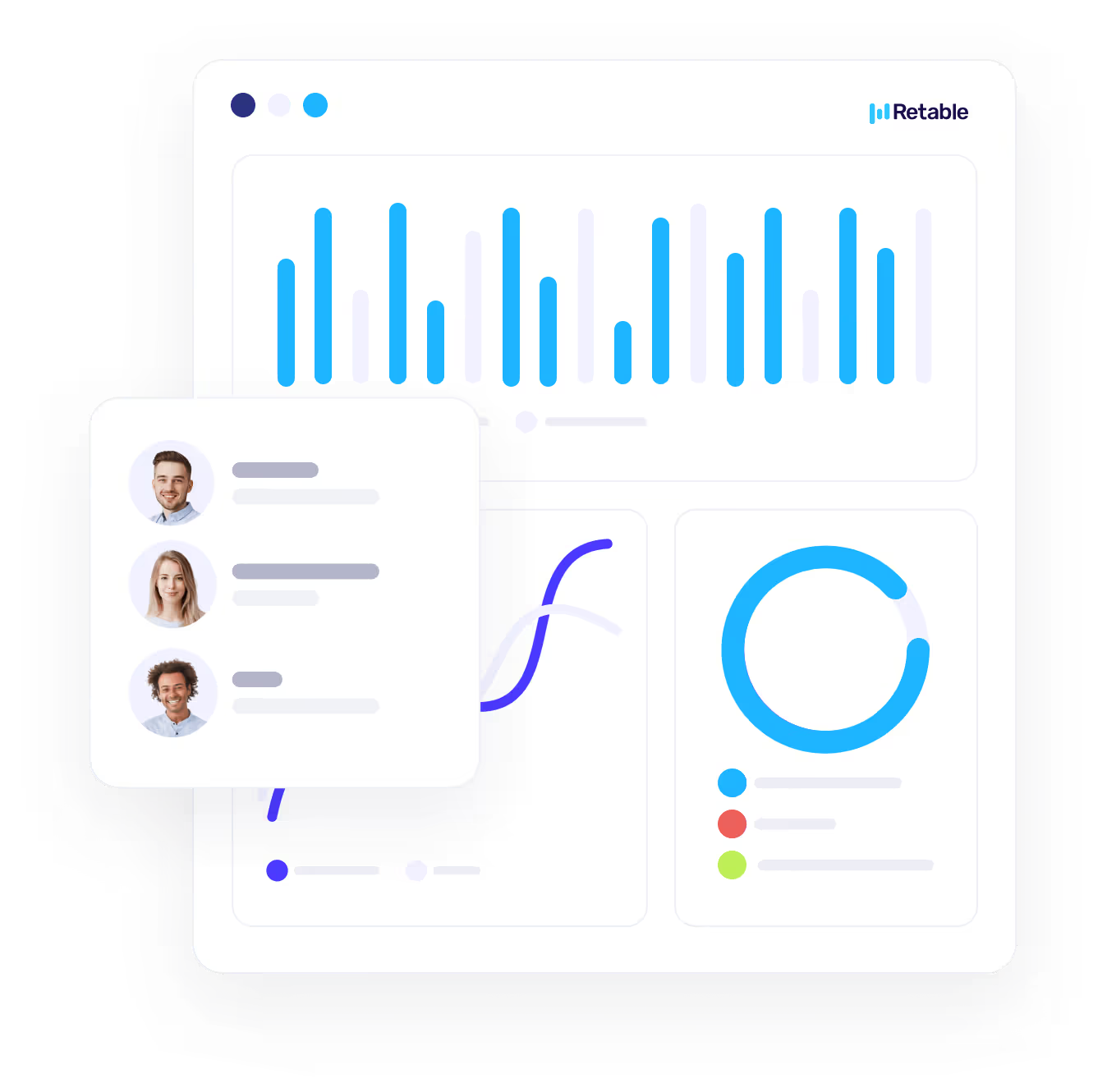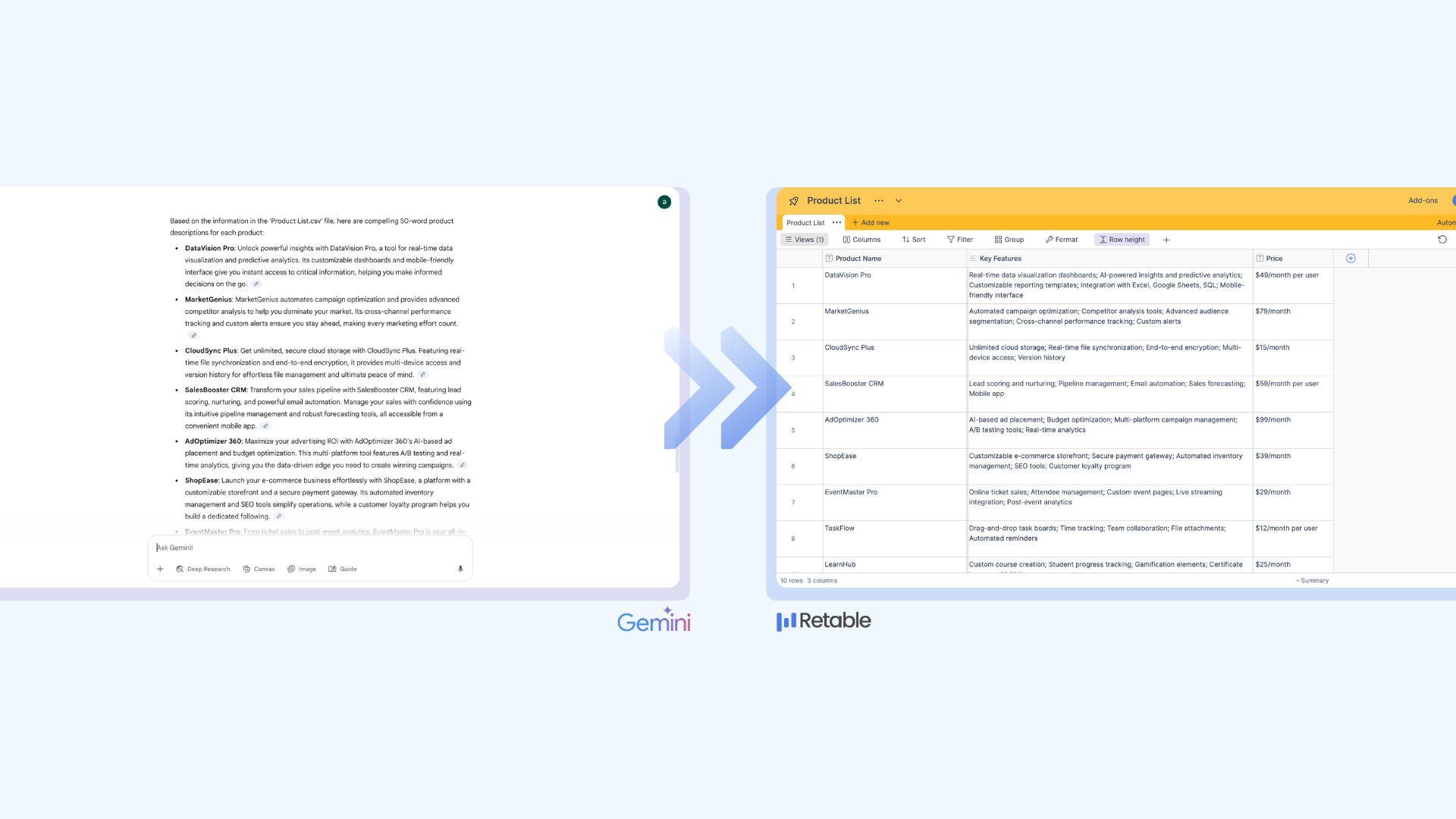Visualizing geographic data with maps in spreadsheets equips users with the skills to transform geographic data into visually informative maps, enhancing their ability to make data-driven decisions and effectively communicate insights. With the help of the this step by step guide, you can easily visualize your geographical data on map views and get meaningful insights from your location data.
Table of Contents
- What is Data Visualization
- Importance of the Data Visualization
- What is Geographic Data?
- How to Convert Geolocation Data in Spreadsheets into Maps?
- How to Use Geolocation Column
- How to Use Map View
- Best Use Cases of the Map View in Spreadsheets
What is Data Visualization
In an increasingly data-oriented digital world, it is more critical than ever to have various data visualization methods to understand, display and analyze data. Imagine that you have countless data from thousands of different data sources, but you cannot interpret this data to gain insights. If you cannot visualize your data effectively, you cannot draw meaningful insights from it. Data visualization techniques are very functional methods, especially for businesses to make data-based decisions.
Data visualization is a graphical representation of data. Data visualization tools provide an accessible way to see and understand trends, outliers, and patterns in data using visual elements such as charts, tables, dashboards, graphs, and maps.
In the world of big data, data visualization tools and technologies are critical for both businesses and individuals to analyze large amounts of information and make data-driven decisions. In summary, data visualization techniques are used to make data more accessible and understandable.
Importance of the Data Visualization
Data visualization is essential for analyzing complex data, identifying patterns and gaining valuable insights. Simplifying and visually presenting complex information enables decision-makers to make informed and effective decisions quickly and accurately.
Data visualization helps businesses quickly identify data trends. Visualizing data with appropriate methods helps analysts visualize concepts and new models.
Every business frequently uses data visualization methods, so data visualization is spreading to all areas where data exists.
Dashboard, chart, infographic, dashboards, map, chart, video, slide, etc. All of these environments can be used to visualize and understand data. Visualizing data allows decision-makers to correlate data to gain better insights and understand the importance of data visualization.
What is Geographic Data?
Geographic data can simply be defined as spatial data to which descriptive attributes of locations are associated. Geographic data contains location coordinates on Earth and is often presented as a map. Geographic data is also known as geo data or geospatial data.
Geographical data can simply be described as locational data to which descriptive attributes have been linked. In digital format geographical features can be represented as a matrix (raster data) or as point, line and polygon coordinates (vector data).
Geographic data is visualized on maps. You can get help from coordinate data to display a specific location on the map. Coordinate data includes latitude and longitude information.

Latitude and longitude is a system of lines used to describe the location of any place on Earth. Latitude lines run east-west across the Earth. Lines of longitude run north-south. Although these are just imaginary lines, they appear on maps and globes as if they were real. You can mark the exact location of any location with latitude and length data. Latitude and longitude combinations are unique for each location.
How to Convert Geolocation Data in Spreadsheets into Maps?
You can get help from various data visualization tools to visualize latitude and longitude data on the map. Data visualization tools with mapping capabilities help you easily display your latitude and longitude data on a map.
One of the most efficient ways to store and manage data today is spreadsheets. Modern spreadsheet tools help you store, organize and visualize your data in various formats. Unlike other spreadsheet tools, Retable allows you to automatically display your latitude and longitude data on the map and access full addresses from this data.
Retable has a geolocation column type where you can store location data in latitude and longitude format. Any location data added to this geolocation column can be automatically displayed in Retable's map view. The geolocation column type also allows you to search by city and country.
How to use Geolocation Column
Retable's "Geolocation column type" allows you to select a location for your records on the map, and best of all, you can view these locations on the map with a single click.
Let's see how it works! 👇🏻
- Add column and select "Geolocation" column type
- Click any cell in this column and select a location
- Or click the "find me" button to allow Retable to find your current location automatically
That's all, now you can easily select locations for all your records.
There are 4 ways to search in our Geolocation column
1. City search
You can search by city name and the map will focus on the city you are searching for, then you can select any location to pin on the map.

2. Country search
You can search by country name and the map will focus on the country you are searching for, then you can select any location to pin on the map.

3. Search with long-lat data
You can directly paste the long-lat data you copied from Google Maps or any map tool into your geolocation column. And Retable pins directly to this location on the map. Example format: 51.5127178390326, -0.07620428405472769

4. Search with long and lat data separately
You can search for location by adding long and lat data separately from the pop-up that appears when you click on your Geolocation column

How to Use Map View
Retable's Map View easily shows you the locations you selected in the Geolocation column type on the map and gives you the density of the records by location. With the help of the colors on the map, you can easily see the density and the number of records in the regions. You can also view the details of these records by clicking on the pins on the map.
Let's see how it works! 👇🏻
- Add column and select "Geolocation" column type
- Click any cell in this column and select a location
- Or click the "Find me" button to allow Retable to find your current location automatically
- Add a "Map View"
- Now all your location records will show in your Map View
- You can zoom in and out with your mouse on the map, so you can see the detailed locations on the map.
- You can also easily have insights about the density in the regions thanks to the colors
- You can access the map view of certain records by applying filters on the map view.
- You can view other column details of the records by clicking the pins on the map and you can customize which column information you want to see.

Best Use Cases of the Map View in Spreadsheets
A map view can be used in a wide range of applications and industries. Here are some of the best use cases for map views in spreadsheets:
Location-Based Services (LBS): Maps are fundamental for location-based services, which include things like finding nearby restaurants, hotels, gas stations, ATMs, or other points of interest. Favori lokasyonlarinizi kisisellestirilmis bir haritada goruntulemek ve bu lokasyonlarla ilgili cesitli detaylara sahip olmak icin map viewdan yardim alabilirsiniz.
Real Estate: Real estate professionals and websites use map views to display property listings. This allows users to see the location of available properties, nearby amenities, and the overall neighborhood.
E-commerce: E-commerce platforms may use map views to show the locations of physical stores, distribution centers, or available inventory in specific regions.
Travel and Tourism: Travel websites and apps often incorporate map views to showcase destinations, attractions, hotels, and local activities. Maps can help travelers plan their trips and explore the areas they intend to visit.
Healthcare: Maps can be used in healthcare for visualizing healthcare facilities, finding nearby hospitals or clinics, and tracking the spread of diseases.
Emergency Services: Maps are crucial for emergency responders to locate incidents quickly, plan responses, and coordinate resources during emergencies like fires, natural disasters, and medical emergencies.
Data Visualization: Maps are an effective way to visualize data. They can be used to display demographics, market trends, and sales data geographically, helping businesses make data-driven decisions.
Event Planning: Event organizers use maps to plan and manage large-scale events like music festivals, marathons, and conferences. Maps help in layout design, crowd management, and providing attendees with directions to various attractions and facilities.
You can start using Retable's map view for free to create map views that suit your specific use cases. You can also embed the maps you create on your website or share them with your friends!
more
Related Resources
Create your smart data management solution
Plan, track, and analyse with your ease. Transform your data with an all-in-one platform, collaborate with your teammates.
Try for free!
.avif)
.avif)


